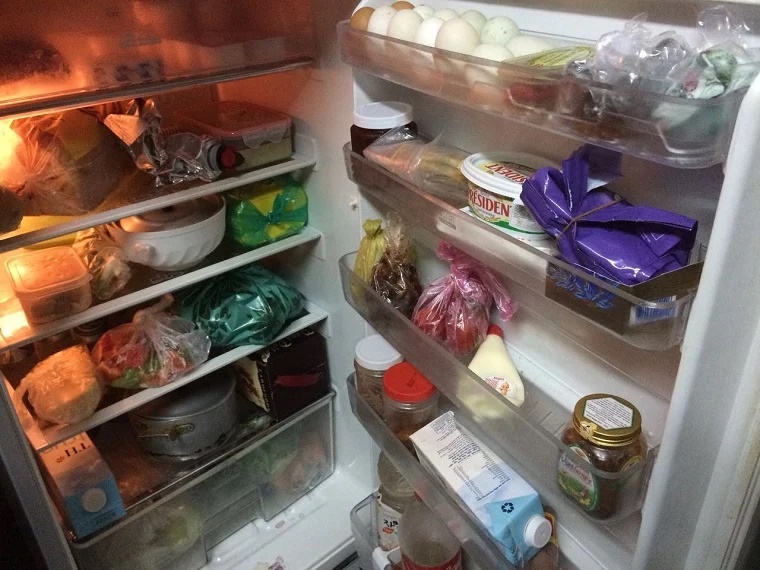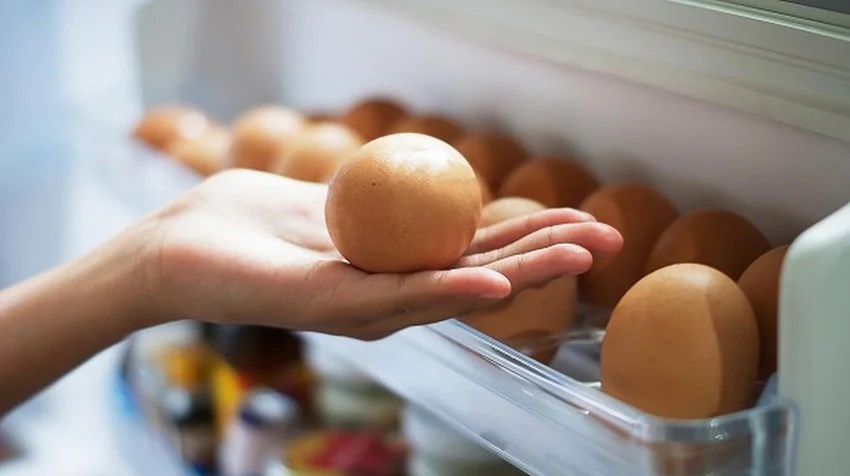Setting the Temperature Too Low
Many households believe that the lower the temperature, the better the food is preserved and the longer it lasts. However, this can cause “cold burn” in vegetables, making them wilt and even freeze. As a result, not only does the food lose its freshness, but the nutritional value also decreases. Additionally, the lower the set temperature, the more energy the refrigerator consumes, and it may encounter overload issues, reducing its lifespan.
Overstocking the Refrigerator

While it’s meant to store food, overfilling your refrigerator is not ideal. When packed too full, the refrigerator lacks proper air circulation, and the cooling system has to work harder to maintain the appropriate temperature, resulting in higher energy consumption.
Furthermore, stacking items too closely can lead to cross-contamination of bacteria from one food item to another. Overfilling also increases the chances of forgetting about certain foods, especially those hidden at the back, which rarely get used.
Therefore, it’s best to avoid overcrowding your refrigerator. Create space and allow for air circulation to ensure even cooling throughout the appliance, maintaining stable temperatures and keeping your food fresh.
Improper Food Arrangement
Some people tend to store eggs and milk right at the door of the refrigerator. However, this can cause these items to spoil faster because the door area is slightly warmer and is frequently exposed to temperature changes due to opening and closing.

Another mistake is placing raw meat on the top shelf. If the meat leaks, it can contaminate the food below. Thus, it’s recommended to store raw meat on the bottom shelf, with cooked dishes and ready-to-eat foods placed on the upper shelves.
Mixing Cooked and Raw Foods
Bacteria from raw foods can easily spread to cooked foods if they are stored too closely together. Among these bacteria, Listeria is particularly dangerous, as it can cause food poisoning and thrives in the cold environment of a refrigerator. It is commonly found on raw meat, and consuming it can lead to symptoms such as vomiting, diarrhea, and meningitis.
It’s best to separate raw meat from other foods, either by using separate compartments or airtight containers or wrapping the meat tightly in plastic wrap.
Food taken out of the refrigerator should be reheated thoroughly to kill any bacteria. Vegetables, on the other hand, should be washed before consumption.
Storing Hot Food in the Refrigerator
It is a common habit to put still-hot food into the refrigerator for storage. However, the heat emitted from these dishes increases the temperature inside the compartment. As a result, the refrigerator has to work harder to bring the temperature back down to the set level, leading to higher energy consumption.
Therefore, it’s advisable to let the food cool down to room temperature before placing it in the refrigerator. Ensure that the food is properly covered or stored in airtight containers.
According to Saigon The Thao

































